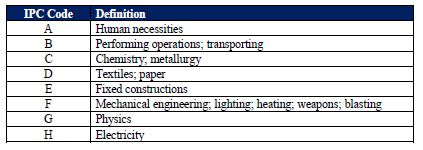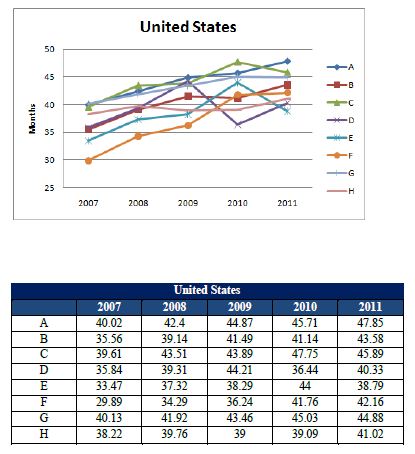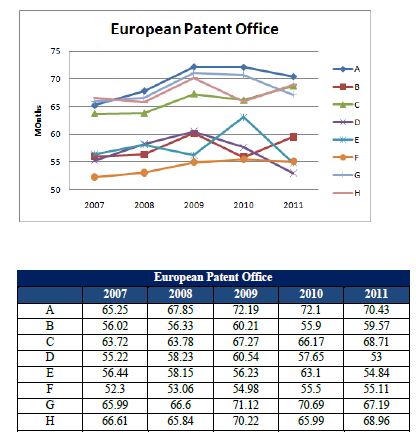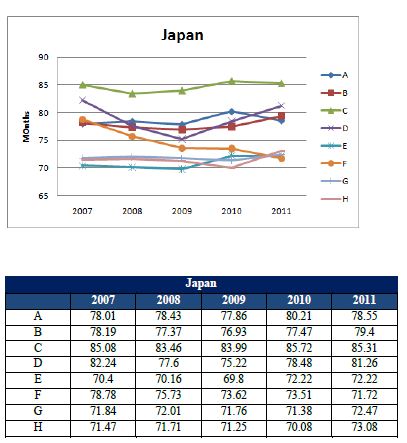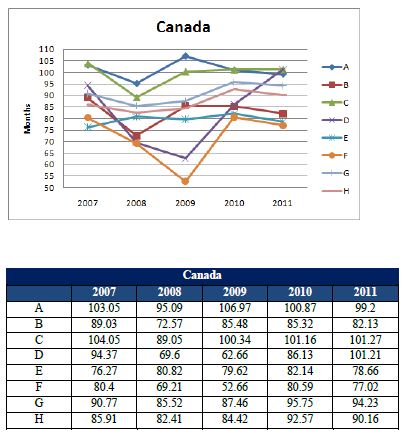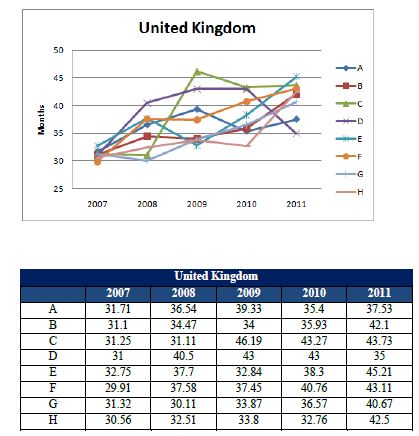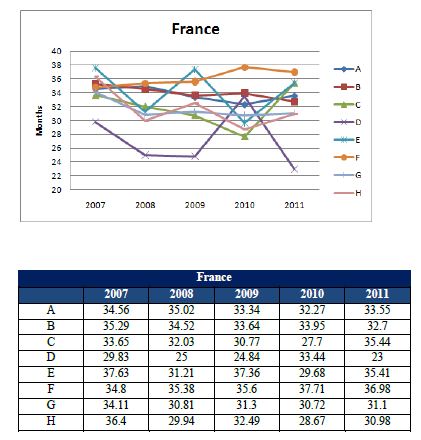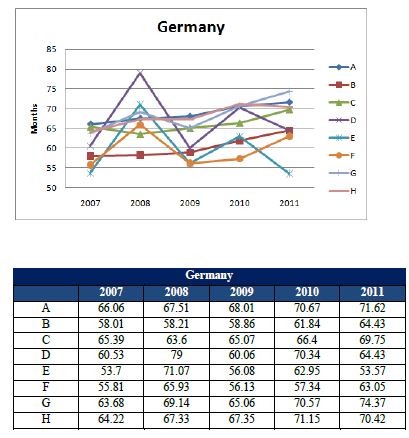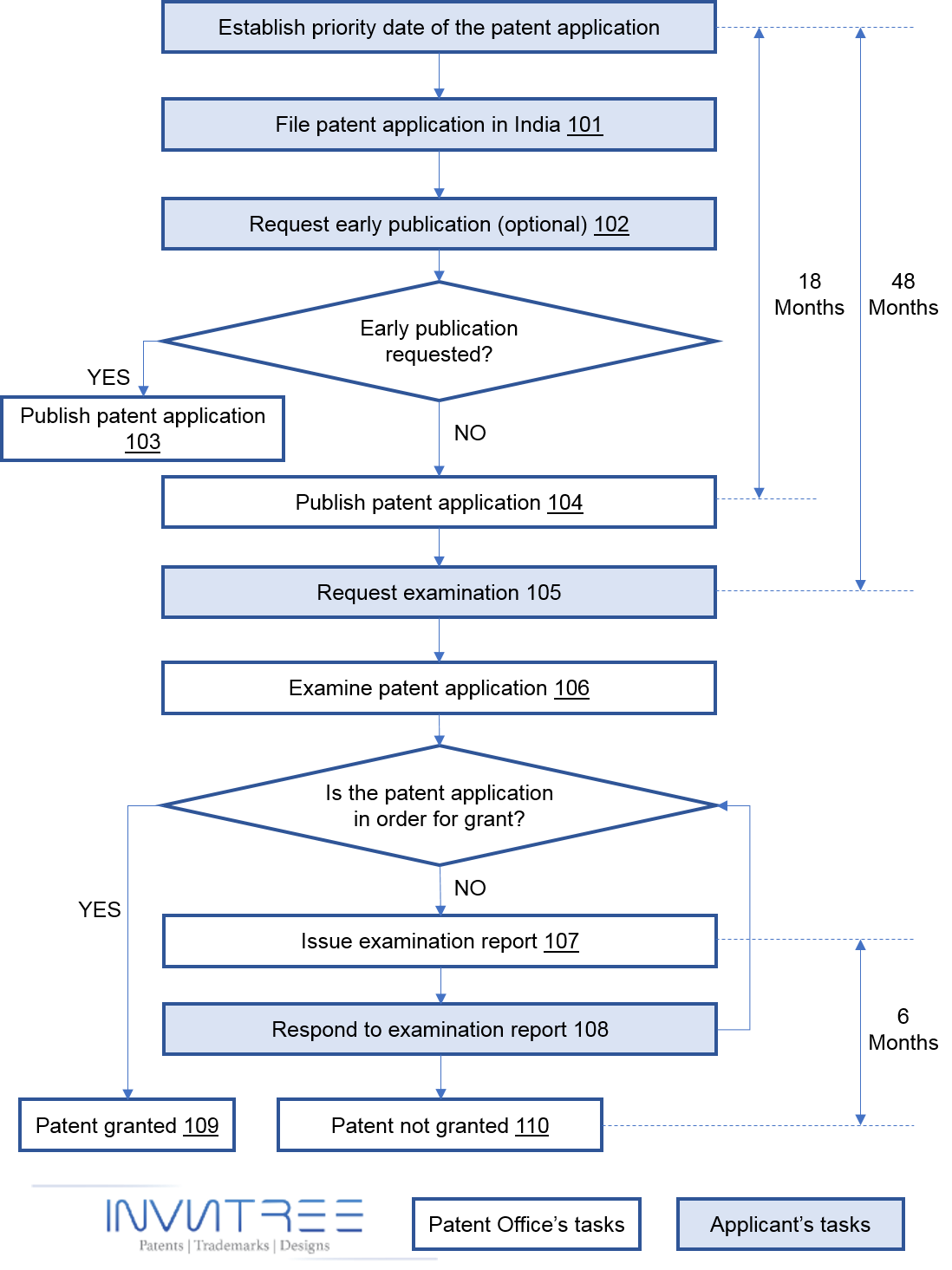Patent Office India – Published Patent Information – March 11, 2011
Patent Office in India publishes patent information on a weekly basis (on Friday each week). This is a public notification, enabling you to take appropriate action if desired.
The publication includes published patent applications and granted patents, among other information, for the week of March 11, 2011.
You may go through this publication, and if you find patent information that has an impact on your business, then you may take appropriate actions, such as:
- File pre-grant opposition on published patent applications
- File post-grant opposition on granted patents
Data sourced from Indian Patent Office by Team InvnTree. The data can be downloaded here and can also be accessed below.
I hope you find this data helpful. Check our patent services page to find out if we cater to your patent requirements. Also, feel free to contact us or ask us a question and have it answered within 24 hours.
This work is licensed under a Creative Commons Attribution-NonCommercial 3.0 Unported License
How Long Does it Take to Get a Patent?
How long does it take to get a patent, is one of the most daunting questions every patent applicant has. Irrespective of how simple the question appears to be, the answer to this is anything but straightforward.
The time required to get a patent depends on various factors, some of which are:
- The country in which the patent application has been filed
The time required to get a patent depends on the ratio of number of patent examiners to the number of patent application received by the respective patent office, and each country might have a different ratio. Additionally, each patent office might have certain number of backlogs to clear, which can affect the time required to get a patent.
-
The field of technology to which the patent application relates
It may be noted that the number of patent applications received by a patent office in certain technology fields can be more compared to a few other technology areas. Further, each patent office has patent examiners designated to examine patent applications in their respective field of expertise. Hence, the time required to get a patent varies based on the density of patent application filing in a given technology field and the number of patent examiners designated to examine patent applications in that field.
- Steps taken to expedite the patenting process
Most patent offices provide provisions to expedite the patenting process. However, the applicant might have to bear certain expenses to avail such provisions. Hence, the time required to get a patent also depends on whether or not you avail such provisions.
As can be comprehended from the above discussion, there are various factors, most of which are uncertain, that have to be considered to determine the time required to get a patent. Hence, instead of trying to deal with such factors, we have taken a statistical approach to provide an insight on the probable time required to get a patent.
This study was carried out using 687856 data points, and it attempts to provide insight on the following:
- Trend – Time required for getting a patent based on the country
- Trend – Time required for getting a patent based on the field of technology in each country
This study was carried out using patents that were granted in the last 5 years (2007 – 2011). Further, the study is panned across 7 major patent jurisdictions, namely:
- United States
- European Patent Office
- Japan
- Canada
- United Kingdom
- France
- Germany
We wanted to cover China, India and Israel. However, data was not available in the preferred format.
Further, the study uses International Patent Classification (IPC) as the platform for determining the field of technology to which the patents related. The IPC codes and their definition are provided below:
The trends derived from this study has been represented using line graphs. In the graphs, X axis indicates duration in months, Y axis indicates the year of grant and the technology fields (IPC codes) are indicated using distant colors.
Trend – Time required for getting a patent in US
Trend – Time required for getting a patent in European Patent Office
Trend – Time required for getting a patent in Japan
Trend – Time required for getting a patent in Canada
Trend – Time required for getting a patent in United Kingdom
Trend – Time required for getting a patent in France
Trend – Time required for getting a patent in Germany
A closer look at the graphs reveals that there is substantial difference between one patent office to another in the amount of time taken to grant patents. Additionally, it can be observed that the technology filed of the patent application has a substantial bearing on the time taken by patent offices to grant patents.
I hope this study helps you in getting a decent perspective on the time that may be required to get a patent. You can download this report along with data in tabular format here.
You may also be interested in reading our article related to examination of patent applications in India:
Feel free check our patent services page to find out if we can cater to your patent requirements. You can also contact us or ask us a question and have it answered within 24 hours!
Best regards – Team InvnTree
Please note that we do not provide any guarantee on the correctness or accuracy of this study.
This work is licensed under a Creative Commons Attribution-NonCommercial 3.0 Unported License
USPTO – Reexamination Request – Update – Mar 02 to Mar 08, 2011
The United States Patent and Trademark Office (USPTO), on a weekly basis, publishes information corresponding to reexamination requests received by them.
InvnTree has compiled in a spreadsheet, the information published by the USPTO and additional information about the patents for which reexamination requests have been filed.
The current compilation provides updates for the period of March 02, 2011 to March 08, 2011.
The compilation can be accessed below or downloaded here.
We provide reexamination support services. Feel free to check our patent services page to find out if we can cater to your patent requirements. You can also contact or ask us a question and have it answered within 24 hours.
Best regards – Team InvnTree
This work is licensed under a Creative Commons Attribution-NonCommercial 3.0 Unported License
USPTO – Reexamination Request – Update – Mar 02 to Mar 08, 2011 – InvnTree
Patent Office India – Published Patent Information – March 04, 2011 – InvnTree
Patent Office in India publishes patent information on a weekly basis (on Friday each week). This is a public notification, enabling you to take appropriate action if desired.
The publication includes published patent applications and granted patents, among other information, for the week of March 04, 2011.
You may go through this publication, and if you find patent information that has an impact on your business, then you may take appropriate actions, such as:
- File pre-grant opposition on published patent applications
- File post-grant opposition on granted patents
Data sourced from Indian Patent Office by Team InvnTree. The data can be downloaded here and can also be accessed below.
I hope you find this data helpful. Check our patent services page to find out if we cater to your patent requirements. Also, feel free to contact us or ask us a question and have it answered within 24 hours.
USPTO – Reexamination Request – Update – Feb 23 to Mar 1, 2011
The United States Patent and Trademark Office (USPTO), on a weekly basis, publishes information corresponding to reexamination requests received by them.
InvnTree has compiled in a spreadsheet, the information published by the USPTO and additional information about the patents for which reexamination requests have been filed.
The current compilation provides updates for the period of February 23, 2011 to March 1, 2011.
The data can be downloaded here and can also be accessed below.
We provide reexamination support services.
Feel free to check our patent services page to find out if we can cater to your patent requirements. You can also contact or ask us a question and have it answered within 24 hours.
Best regards – Team InvnTree
This work is licensed under a Creative Commons Attribution-NonCommercial 3.0 Unported License
USPTO – Reexamination Request – Update – Feb 23 to Mar 01, 2011 – InvnTree
How to Conduct a Patent Search?
A patent (prior art) search is a process of identifying granted patents and published patent applications (collectively referred to as patent documents) that bear similarity to the subject matter which is of interest to you. A patent search is most often the first step in achieving different objectives, some of which are:
- Determining the probability of having a patent granted to a proposed invention
- Determining if you have the freedom to operate
- Determining if a granted patent can be invalidated
Based on the objective, the search strategy can vary to some extent. Also, in addition to conducting a search in patent databases, a search can be conducted to identify relevant non-patent literature. In this article however, we will be talking about carrying out a search to identify relevant patent documents using free online patent databases (although, in my opinion, paid databases add substantial value).
The free online patent databases I suggest are:
- Google Patents: Works best on Chrome and has a good search interface
- Espacenet: Good data coverage
- Freepatentsonline: Good search interface. Patent data coverage is not as good as Espacenet
Using any of the above mentioned search databases, you can use various search strategies to identify relevant patent publications.
Top 5 patent search strategies
- Key string search
- Patent classification search
- Citation based search
- Assignee based search
- Inventor based search
1. Key string search
A key string search is an activity of querying a patent database using key strains that are formed using key words. A step-by-step process of carrying out a key string search is provided below:
- Identify words that define the features of your invention
- Identify words that are synonymous to the words identified in the previous step
- Form key strings that can be used as a search query in the database:
- Combine synonymous words using OR operator. A search query such as (attach OR secure) will return documents (results), which have the word “attach” or “secure” or “attach” and “secure”
- Join combinations of words using AND operator. A search query such as (attach OR secure) AND (rod OR bar) will return documents which have one or more of “attach” and “secure” AND one or more of “rod” and “bar”
- Use operators to capture semantic variants of the key words. Ex: “attach*”, this query will return documents which have at least one of “attach”, “attached”, “attaching” and “attaches”. Please note that, generally databases use the operator “*” or “!” to enable capturing semantic variants. Read the help section of the database you are using to identify the correct operator.
- Example of a search query formed using the above described operators:(attach* OR secur* OR connect* OR fasten*) AND (rod* or bar* or slab*)
Note that some databases also allow you to define the proximity within which your key words should be from one another in returned documents. You may also use such proximity operators to narrow your search query.
Further, if time is a constraint, then you can start with a narrow search query and then decide on broadening the query depending on the results you find.
Also, you can define the fields in the document in which you want to search. Again, if time is a constraint, then you can start with searching only in “title”, followed by “title + abstract”, followed by “title + abstract + claims” and finally in “complete specification”. You decision to expand the scope of fields of search may depend on the relevancy of the results you find.
Remember, key word search can be very tricks. Most often, success in key word searching depends on the exhaustiveness of the key words, which you have used. For example, if you are searching for documents relating to pen by using only “pen” as your query, then you will miss documents, which in fact relates to pen, however, the word “pen” is not present in the document. Instead, they might have used the phrase “writing instrument”.
In my opinion, if you want reduce the risk of not identifying some relevant results, then you should carry out a patent classification search in addition to key word search.
2. Patent classification search
Patent classification is a hierarchical system in which technology has been classified. Each patent application will be assigned one or more class based on the technology to which it relates.
You will have to identify one or more classes that are relevant to your invention to conduct a classification search. There are various classification systems, such as, US patent classification, European Classification (ECLA) and International Patent Classification (IPC). I recommend identifying relevant IPC codes, as almost all the patent offices assign IPC classes to the applications they receive. Hence, by using IPC codes as search query, you can search patent documents filed across various patent offices. Alternatively, if you were to use US classes in your classification search, then you would be able to search only US patent documents.
There are several ways of identifying the relevant IPC codes, some of which are:
- Browsing through the hierarchical IPC system. Note that the IPC system has ~ 69200 classes. Hence, some might find this approach tedious and ineffective.
- Indentifying relevant IPC codes using “catchwords”. A list of catchwords can be accessed using the above link. Select catchwords that relate to your invention. Subsequently browse through the classes listed under the selected catchwords to select relevant IPC codes.
- Using the relevant/related patent references that you found using key word search to identify relevant IPC codes.
Personally, I prefer this approach. In my opinion, the ideal way to go about it is to run a narrow key word search (broaden it based on the results) and identify a few related/relevant references. Thereafter, pick the IPC classes assigned to those patent documents. Additionally, if available, gather all the IPC classes, which the patent examiner had used while examining the identified patent documents. After gathering a list of potentially relevant IPC codes, read the definition of each of those IPC codes and IPC codes that are closely related to them to identify the IPC codes that can be used for your patent search.
If you find IPC codes that are very relevant to your subject, then you can query the database using such IPC codes without adding further restrictions. However, in some case, IPC codes are a little vague and define a very broad scope. In such a scenario, querying the databases using only IPC codes may yield large number of results. Depending on the time constraints, it might not always be possible to review large number of patents. The number of results can be reduced by adding broad key words as limitation to the query that includes IPC codes.
In my opinion, the keyword searching is like trying to catch a fish using an arrow, and classification searching is like catching using a net.
After you have completed your keyword and classification searching activities, I strongly recommend citation based search to make your search more fool proof.
3. Citation based search
Citation is reference to prior technology. The references can be cited by a patent applicant or the patent examiner. Further, a patent document may have backward citations (references the patent document is citing) and forward citations (references that are citing the current patent document). You may consider both backward and forward citations (collectively called citations) for your search.
To carry out this exercise, extract citations from all the relevant documents that you found using the first two search strategies. Thereafter, analyses the cited documents to uncover more references that are relevant. If you find relevant references among the citations, then carry out citation search exercise for all the newly found relevant patent documents.
After completing the search activity using the first three strategies, you can follow it up with assignee and inventor based search to further reduce the risk of missing some relevant references.
4. Assignee based search
To carry out assignee based search, extract a list of assignees/applicants from the list of relevant documents you found using the previous search strategies. Now you can query the database using assignee/applicant names. Note that you might end up reviewing the same documents again and again (one of the many drawbacks of free databases). In some cases, an assignee/applicant might have very few patents to their name. If there is less number of patents, then you can choose to review all the documents. However, if the assignee/applicant has more number of patent documents to their name, then you might have to add some limitation to the search query to reduce the number of results. I advise you to use limitations whose scope varies from the scope of the limitations that were used in our initial search strategies.
5. Inventor based search
Inventor based search is carried out by extracting a list of inventors’ name from the list of relevant documents you have found using the previous search strategies. Now you can query the database using inventors’ name.
After you have completed the assignee and inventor based search, if new relevant documents are found, then another round of citation search exercise using the newly found references would make your search more comprehensive.
These five search strategies will collectively make your patent searching exercise comprehensive and increases the probability of uncovering relevant patent references. You can download this article here.
I hope this article helps you in patent searching. Please feel free check our patent services page to find out if we can cater to your patent requirements. You can also contact us or ask a question and have it answered within 24 hours.
Best regards – Team InvnTree
This work is licensed under a Creative Commons Attribution-NonCommercial 3.0 Unported License
Patent Office India – Published Patent Information – InvnTree Feb 25, 2011
The Indian Patent Office publishes patent information on a weekly basis (on Friday each week). This is a public notification, enabling you to take appropriate action if desired.
The publication includes published patent applications and granted patents, among other information, for the week of February 25, 2011.
You may go through this publication, and if you find patent information that has an impact on your business, then you may take appropriate actions, such as:
- File pre-grant opposition on published patent applications
- File post-grant opposition on granted patents
Data sourced from Indian Patent Office by Team InvnTree. The data can be downloaded here and can also be accessed below.
I hope you find this data helpful. Check our patent services page to find out if we cater to your patent requirements. Also, feel free to contact us or ask us a question and have it answered within 24 hours.
Indian Patent Office – Published Patent Information – InvnTree Feb 18, 2011
The Indian Patent Office publishes patent information on a weekly basis (on Friday each week). This is a public notification, enabling you to take appropriate action if desired.
- File pre-grant opposition on published patent applications
- File post-grant opposition on granted patents
Indian Patenting Process Timeline
Each country follows its own predefined procedure of receiving patent applications, examining the applications and granting patents or rejecting patent grants. Based on the procedure followed by a patent office, the time required to have a patent granted to your invention can vary.
Step 101
File a patent application in the IPO. I think you might find our articles on “Patent Application Filing Procedure/Process in India” useful.
Patent Application Filing Procedure-Process in India
Patent Application Filing Procedure-Process in India
Filing a patent application in the Indian Patent Office is the first step towards securing a patent to your invention in India. To file a patent application, a set of forms has to be submitted to the patent office. The forms can be submitted online (http://ipindiaonline.gov.in/epatentfiling/goForLogin/doLogin) if you have a class 3 digital certificate. Alternatively, you can send true copies (hard copies) to the patent office. The patent office charges 10% additional fee if applications are filed offline.
| Office | Address | Territorial Jurisdiction |
|---|---|---|
| Mumbai |
Intellectual Property Office, Boudhik Sampada Bhawan, Near Antop Hill Post Office, S.M.Road,Antop Hill, MumbaiI – 400 037. Phone: 24137701, 24141026, 24150381, 24148165, 24171457 FAX : 24130387 EMAIL: [email protected] |
The States of Maharashtra, Gujarat, MadhyaPradesh, Goa and Chhattisgarh and the Union Territories of Daman and Diu & Dadra and Nagar Haveli |
| Chennai |
Intellectual Property Office, Intellectual Property Office Building, G.S.T. Road, Guindy, Chennai-600032, Phone: 044-22502081-84 FAX: 044-22502066, Email: [email protected] |
The States of Andhra Pradesh, Karnataka, Kerala, Tamil Nadu and the Union Territories of Pondicherry and Lakshadweep |
| New Delhi |
Intellectual Property Office, Intellectual Property Office Building, Plot No. 32, Sector 14, Dwarka, New Delhi-110075, Phone : 011-28034304, 28034305 28034306 FAX:011- 28034301,02 Email: [email protected] |
The States of Haryana, Himachal Pradesh, Jammu and Kashmir, Punjab, Rajasthan, Uttar Pradesh, Uttaranchal, Delhi and the Union Territory of Chandigarh. |
| Kolkata |
Intellectual Property Office, Intellectual Property Office Building, CP-2 Sector V, Salt Lake City, Kolkata-700091, Phone : 23671945, 1946, 1987, FAX-033-2367-1988, Email:- [email protected] |
The rest of India. |
|
Form |
Title |
Patent office Fee (INR) 1$ = ~ 60 INR E-Filing only |
Comment |
||
| Applicant-Natural person/ Startup |
Applicant –
other than natural person |
||||
| Small Entity | Others except small entity | ||||
| 1 | Application for Grant of Patent | 1600 | 4000 | 8000 | Mandatory |
| 2 | Provisional/Complete Specification | No fee* | No fee* | No fee* | Mandatory |
| 3 | Statement and Undertaking Under Section 8 | No fee | No fee | No fee | Mandatory |
| 5 | Declaration as to Inventorship | No fee | No fee | No fee | Mandatory |
| 9 | Request for Publication | 2500 | 6250 | 12500 | Optional |
| 18 | Request for Examination of Application for Patent | 4000 | 10000 | 20000 | Mandatory |
* – A fee of 160/400/800/sheet, based on the type of applicant, is applicable for each sheet exceeding 30 sheets in a patent specification. Further, a fee of INR 320/800/1600/Claim, based on the type of applicant, is applicable for each claim exceeding 10 claims in the patent specification.
Cost estimate has been emailed
Failed Message
Cost estimate has been not emailed
No. of pages in the specification
- The Indian Patent office charges an additional fee for each additional page over 30.
- The total number of pages includes description, claims, drawings and sequence listing if any.
- The margins requirements are 4 Cms at top, 4 Cms on left, 3 Cms at bottom and 3 Cms on right. Line spacing is 1.5.
No. of claims
- The Indian Patent office charges an additional fee for each additional claim over 10 claims.
- There is no restriction on the type of claims. The claims can be independent,dependent or multi-dependent. Only additional fee per claim is charged for each additional claim above 10 claims.
No. of priorities claimed
- The Indian Patent office charges an additional fee for each additional priority document over 1 priority.
- While calculating the number of priorities, PCT application is not considered a priority. If the PCT application itself is the priority application, then it is considered as a priority application.
Request for examination:
- The deadline to file an examination request in the Indian Patent office is 48 months from the earliest priority date.
- It is however, recommended to file the examination request along with the application, since the application is queued for examination, only upon filing the examination request.
- The fee mentioned in this calculator is for the normal examination request. It is recommended to file an express examination request, if the national phase application is filed much earlier than the 31 month deadline. By filing an express examination request, the application is put in queue immediately upon filing the application. If a normal examination request is filed, the application is put in queue for examination only after 31 months from the priority date.
Applicant type
- Any individual(s) applying for a patent is considered as a natural person. To be considered as natural persons, all the applicant(s) should be individuals.
- Applicants wishing to claim Start-up Status, need to provide proof of being a Start-up. To know more about this, you can read our article
- Applicants wishing to claim Small Entity Status, need to provide proof of being a small entity. To know more about this, you can read our article.
- Entities who do not qualify as either individuals or start-ups or small entity, will be considered as large entity
The following specification describes the invention
On the other hand, if you are filing a complete patent application, then use the following preamble in the first page of Form 2:
Note that, if you are filing offline, 2 copies of the patent specification has to be sent to the patent office. Additionally, count the number of sheets and claims (extra fee for more than 30 sheets and more than 10 claims) and calculate the appropriate fee. While counting the sheets, even the drawing sheets will have to be taken into account.
Form 3 is used to furnish information/actions relating to patent applications filed in other countries for the current invention. Additionally, any information relating to the rights corresponding to the present patent application has to be furnished. Further, you would be using form 3 to undertake that you will be keeping the patent office informed in writing the details regarding corresponding applications for patents filed outside India. You can read more about this in ourarticle.
- How much does it cost to get a patent in India?
- What can be patented and what cannot be patented
- What are the different patent filing options?
- Indian Patenting Process Timeline
- At Which Stage Should I Apply for a Patent?
- Can I apply for a patent before creating a prototype?
- Should I apply for a patent before publishing my invention?
- Can publicly disclosed inventions be patented in India?

 Follow
Follow